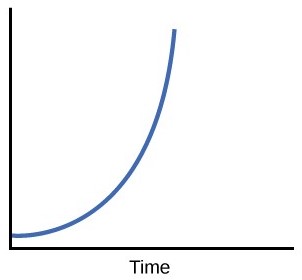Alana Miller
Policy Analyst
Thousands of leaders from all over the world descended upon San Francisco last week for the first Global Climate Action Summit, hosted by the governor of California, Jerry Brown. The summit included disparate voices from all over the world, and they helped paint a picture of what the future of global climate action might look like.
Policy Analyst
Thousands of leaders from all over the world descended upon San Francisco last week for the first Global Climate Action Summit, hosted by the governor of California, Jerry Brown. Over two days, we heard from a dizzying number of panelists, their diversity representing the widespread commitment of companies, foundations, cities and nations to combat the existential threat of climate change.
Indigenous people in traditional dress talked about what climate change looks like today 80 miles north of the Arctic circle, and how we cannot combat global warming if we continue razing rainforests in the Amazon. Businessmen and women, like Michael Bloomberg, stood in suits presenting the economic arguments of climate change – if we don’t act, the economic costs of dealing with global warming will be overwhelming, while action now can be profitable. And of course, leaders of new tech companies (often wearing T-shirts) offered solutions we couldn’t have dreamed of 10 years ago.
I couldn’t keep track of all the commitments announced at the summit (the website reports that more than 500 major commitments were made) but here are a handful:
Overall, the summit presented a mosaic of what global climate action will look like. Across these disparate groups of people, some key themes emerged – including that we all need to do our part, that we all have to work together, and we have to work across all sectors.
Another theme, championed by Christiana Figueres (former Executive Secretary of the UN Convention on Climate Change) was that, whatever we do, it cannot be linear or incremental – we need exponential change. That means all our progress on sustainability needs to look something like this:
Exponential growth over time.

If that seems overwhelming, check out the growth of solar energy capacity in the U.S. over the last decade:

Or the annual sales of electric vehicles in the United States:

Both of these examples show that rapid progress is possible. We have to continue to accelerate the pace of action and enable new breakthroughs, challenging ourselves to demand change at the scale of the threat we face.
Exponential change demands bold commitments, innovation and creative thinking. There were many examples of all three at the conference. But there were also some glaring omissions. Particularly when it comes to transportation, the most visible solutions touted at the summit focused on yet-to-be piloted, much less proven successful, autonomous electric vehicles and other flashy technology. As Alissa Walker noted, “At times, the summit felt more like an auto show.”
Prototype for an autonomous electric vehicle at the Global Climate Summit.

We clearly need electric vehicles to succeed if we want to break our dependence on oil and eliminate carbon pollution from transportation. But there are also many tried and true solutions that require no technological breakthroughs, such as building compact communities that require less travel, creating safer streets for people who walk and bike, and expanding transit. As the San Francisco Bicycle Coalition demonstrated with a “people protected” bike lane outside the summit, there are many low-carbon strategies that could be implemented today, for comparatively little money, even as we are developing and implementing the zero-emission vehicles and systems of tomorrow.
On the energy front, there are many barriers to people just putting solar on their houses, or storing the solar energy they produce, that could be fixed with relatively easy policy solutions. There is also much we can achieve by keeping fossil fuels in the ground, putting an end to fracking, and stopping building new pipelines.
Clearly, we have no time to waste. The impacts of global warming are no longer something for the future – they are here now. The climate summit was happening the day Hurricane Florence barreled into the Atlantic coast. Mayor Bill DeBlasio of New York City explained how Hurricane Sandy became a defining moment in New Yorkers lives and in the region’s history. Island nations expressed fear for their very survival in the face of rising seas. The mayor of Houston talked about how his city has been hit by three 500-year floods in the last three years, prompting the leader of the oil-production capital in a Republican state to become a national climate leader.
Will all the commitments be enough to put the brakes on climate change? That depends on whether the attendees at the summit follow through on their commitments – and whether the billions of people who weren’t present at the summit challenge them to do more and back them up when they do the right thing.
The feeling I got from the summit was one of increasing desperation from the thousands of top leaders across the globe who took part. Many of these leaders have staked their political careers, at least in part, on their ability to be part of the solution.
The next step is to take the political will demonstrated at the Global Climate Action Summit and grow it. Exponentially.
Policy Analyst
